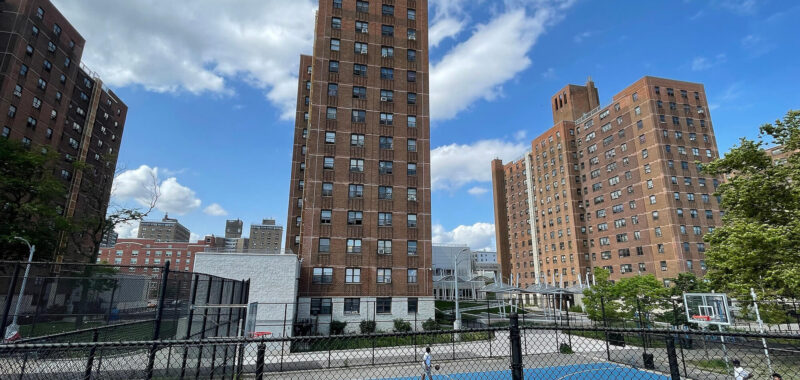It’s been almost a decade since PACT/RAD debuted, and the jury is still out over whether or not the program, which ostensibly privatizes public housing, is the best way to fix a broken housing system. This year, a number of NYCHA developments were selected for PACT/RAD, meaning that public housing units will be switched over from Section 9 to project-based Section 8 status.
A recent vote in South Brooklyn signals that the tide may be turning, however. At Coney Island Houses and Unity Towers, two public housing developments with a combined 700 households, NYCHA residents voted no to PACT/RAD this past August. Instead of PACT/RAD, Coney Island Houses residents opted to retain Section 9 status, meaning their buildings will remain public housing, and the residents themselves will have access to all of the rights Section 9 status affords.
“Coney Island Houses residents rejected the conversion of their Section 9 housing into Section 8, and that’s a win,” Louis Flores, a cofounder of Fight for NYCHA, a public housing advocacy group, told AN. “It shows that, when residents are educated on the issues, they see the risks of conversion. They eventually said: ‘We want nothing to do with this’ and that’s why they stayed in Section 9.”
Meanwhile, not far from Coney Island Houses, residents of Unity Towers, otherwise known by NYCHA officials as Coney Island I (Site 1B), voted to participate in the Public Housing Preservation Trust, a third option approved in 2022 for NYCHA residents between Section 9 and PACT/RAD. This means that public housing units at Unity Towers will be transferred into a “public trust” and switched from Section 9 to Section 8, but NYCHA will still be the manager. It also means that repairs there will be bankrolled by a system of debt-financing with private developers—a system which is cause for concern for a number of public housing advocates like Flores.
Fixing a Broken System
Since 2015, both PACT/RAD and Preservation Trust have garnered support from across the political spectrum. Politicians like Mayor Eric Adams and Democratic Socialists of America (DSA) state representative Julia Salazar have applauded these initiatives for unlocking much needed capital investments amid an alleged $78 million deficit. Critics like Flores argue however that these programs strip public housing residents of invaluable protections vis-a-vis the Faustian bargain of privatization.
Flores’s group, Fight for NYCHA, has been critical of both the Adams administration and DSA for not doing enough to protect public housing. Today, Fight for NYCHA is calling upon Adams to resign, and Flores himself is running in the 2025 election to preside over District 3 in the New York City Council. If he wins, Flores would represent residents of Fulton and Elliott-Chelsea Houses, marking a potential challenge to the current, controversial master plan for those developments which entails PACT/RAD privatization.
Flores told AN that PACT/RAD “is so dangerous” because “when public housing residents convert from Section 9 to Section 8, they lose some of the protections they’re afforded under the Fair Housing Act,” one of the many achievements won during the Civil Rights Movement.
Residents who have chosen PACT/RAD, Flores added, have seen new and increased utility bills. He also noted that new rules can be implemented that can cost residents their homes, and prohibit social gatherings in community courtyards. It also inhibits people from being able to hand down their Section 9 homes to family members. “Under Section 9, leases can be transferred from a parent to a child. This keeps generations of families together in affordable housing. This is not possible under Section 8,” Flores said.
“Under Section 8, whether it’s PACT/RAD or the Preservation Trust, you lose the government as your landlord,” Flores continued. “And in exchange you likely get an unreachable LLC, or some other corporate apparatus, that’s able to collateralize public housing and borrow against it. This allows the private sector to profit off of public housing. And this creates dangers.”
At the Polls
Outside of the problems raised by Flores, another issue that consistently comes up is the voting process in which either PACT/RAD, Section 9, or Section 8 is selected. Certainly, this sparked tension last summer at Fulton and Elliott-Chelsea Houses in Manhattan: That election saw only 30 percent of eligible residents vote, meaning that, in fact, only 18 percent of residents actually wanted PACT/RAD.
Voter turnout in Coney Island these past few months was far higher than it was at Fulton and Elliott-Chelsea Houses. At Coney Island Houses, 415 residents voted, representing 54 percent of eligible voters. Of the 415 votes, 241 people opted to retain Section 9 status, 125 voted to join the Preservation Trust, and 42 voted for PACT/RAD. At Unity Towers, a total 192 residents voted, marking 59 percent of eligible voters: 108 residents voted to join the Preservation Trust, 72 voted to remain in Section 9, and 11 voted for PACT/RAD.
Coney Island Houses TA president Lauretta Brumfield said that the process at her development was effective and representative of her electorate. “I’m proud to see so many of my neighbors took advantage of the opportunity that the resident vote provided,” Brumfield said in a statement. “Together, we’ve demonstrated that we have a say and our choices matter. I’d like to thank NYCHA’s Voter Engagement Team for helping to explain the ballot options and engage with us throughout the process so that we were able to make informed decisions when casting our votes.”
“The residents of Unity Towers have made their voices heard,” said Unity Towers TA president Elizabeth Maldonado. “When voting began, we wanted to make clear to our community how important this opportunity was, and judging by the impressive turnout, I believe the message was received. Now, we begin a new chapter as residents of Unity Towers, and I’m truly looking forward to the positive changes our work alongside the Trust will bring to our homes.”

